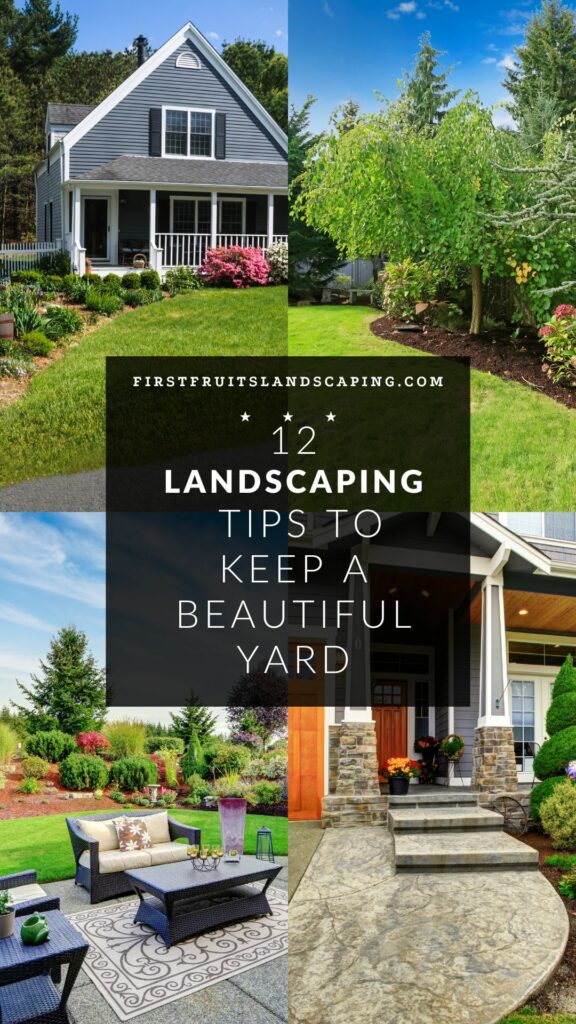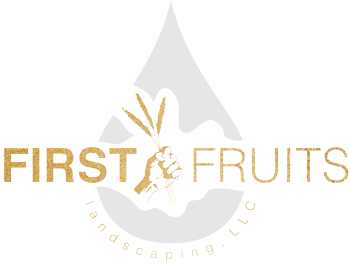12 Landscaping Tips to Keep a Beautiful Yard – Close your eyes and imagine that you are living in the house of your dreams. When the sun rises it lights up every room inside your house, creating a warm, welcoming environment. When the sun sets beyond the horizon, the color of the walls in your house takes on a stunning burnt sienna, an ode to the natural colors of the sunset. Homes are impressions of our personalities, taking on the physical form of the pieces and parts of ourselves we built into the foundation.
It only makes sense that you want your slice of paradise to look both beautiful on the inside, as well as on the outside. Landscaping is just as paramount to the beauty of a home as the color on the exterior of your house. Each landscape, much like the house, makes a statement. Whether it is the addition of rocks or bark, flowers, or trimmed hedges, every single landscape requires some amount of knowledge in how to make it work for your space.
Continue to read to find 12 landscaping tips to keep a yard just as beautiful as your home.
1. Invest in Tarp and Weed Fabric
When you are first starting the lay of the land of your vision to your landscape, you are likely working from scratch. A tarp will come in handy when it is time to move some lightweight bulky debris, such as leaves, brush, and even some upturned earth. It has many great options of use, like holding dirt when digging a hole to keep your grass clean.
Think about investing too in weed fabric. This fabric will prove to be quite useful under gravel, and walkways alike to keep the material from sinking into that pesky soil. When it comes to areas of your landscape that are already planted, skip the weed barrier fabric. It may provide a sense of accomplishment that can turn out to be short-term. Unfortunately, weeds are tricky, determined little things that can sometimes start growing in the mulch atop the fabric.
2. For Flow and Symmetry, Create an Edge
To add to the natural beauty of your landscape and overall design, consider making a natural edge yourself, instead of investing in cheap plastic or metal edging. This is a trick used in giving a particular look to the landscape, whether it is neat and trimmed, or long, and unkempt. A natural edge is useful in allowing for easier maintenance over a long period, providing more flexibility for later changes to your landscape.
3. Invest in Starter Fertilizer
Whenever you go to the plant nursery and bring home a new blossom of life, use a starter fertilizer. Starter fertilizers can provide a healthy boost to new plantings, with the top-end products having a low count of nitrogen, a higher count of phosphorous, and most importantly, fungi that are beneficial in increasing the soil area that plant roots draw their sustenance. Look for mycorrhizae-beneficial fungi. With the correct planting technique and a good start fertilizer, your plants are sure to thrive.
4. The Best Garden Tools
For a stunning landscape, it only makes sense to look into purchasing good-quality tools. The best quality may be too pricey for some, and quite possibly an unnecessary expense to DIYers. But cheap tools are likely to break in the middle of your project, and may even cause harm to your precious plants. Save both money and time by investing in quality tools.
5. Consolidate Annuals of Plants
For maximum impact, it would be wise to consolidate annuals in both pots and beds at high-visibility locations in the landscape. Planting annual color throughout the entire landscape every season would prove to be quite costly and could be out of your budget. High-impact long bloomers should be set near locations such as the mailbox, entryway, and some hanging patio containers.
6. Cut Down Time on Mowing
Beds and islands of plants are a quick and easy way of grouping and can cut down the time you spend on your grass. Mulching these groups well can also help you avoid having to painstakingly mow and trim around each plant.
7. Save Your Leaves
To repay mother earth for providing such beautiful, natural land your house sits on, repay the kindness in saving your leaves; don’t send them to the landfill. Instead, provide doses of fertilizer for the grass and food for the earthworms by mowing small quantities into the lawn. Grind up fall leaves and use them as mulch, or add them to the composite pile using a bagging mower or a leaf shredding blower. If you are into the many benefits of having your garden, till the shredded leaves into your vegetable garden to aid in the health, and survival of your planted winter cover crops.
8. Consider Recycling your Grass Clippings
Sick of spending money on fertilizers, and wishing you knew a way to save on the expenses? Look no further than just beneath your nose! Use your grass clippings from your mulching mower, instead of investing in a bagging mower. This can cut fertilizer requirements down by 30%.
9. Ensure the Testing of your Soil
Check out the benefits of your state’s University Extension Service, and get your lawn and garden soil tested. Taking jabs in the dark on fertility requirements can lead to some costly mistakes in the future. The test results received from your soil will render current conditions and what may need to be applied for your type of lawn, vegetable/fruit garden, and flower garden.
10. Work From a Blueprint
Take the time to sit down with a pencil and some paper and consider what it is you are looking for in your dream landscape. Create a master plan, and begin to work in phases. It may be difficult at first, but trust us, phasing will help with the overall grandeur of your vision. To keep the budget in check, consider focusing on the needs versus the wants and weigh out what is most important to you. Try to focus your attention on all of the smaller projects that are part of the big picture. When one project is complete, keep track of what is important, and move on to the next.
11. Purchase Enough the First Time
To limit the number of times you are making trips to invest in soil or mulch, you will first be required to know how to calculate the square footage of the area. This will look like length x width for square or rectangular areas. Knowing how to convert the cubic feet of the material for the coverage of the area based on specified depth will look like the number of cubic feet multiplied by 4 will result in the number of square feet, plus the additional three inches of coverage.
12. Purchase Enough Plants
To curb disappointment, you won’t want to run out of varietal choices. In this case, much different than the aforementioned purchase of soil, buy more flowers than you think you will need. There is always room to return extras or find additional space to use them. If you should run out, you may run into the disappointment of returning to the nursery and finding that your colors have sold out.
Contact Firstfruits Landscaping for more information on designing the perfect backyard. Remember, we do everything from initial design and layout to hardscape, construction, fencing, plantings, and all types of landscape design. From plumbing and electrical to construction and landscape, trust your next outdoor project to Firstfruits Landscaping.
Get a QuoteFor more information on Landscaping and Gardening Check Out These Posts:
- 10 Genius Landscaping Tricks
- Full Yard Renovation
- Should I Reseed or Use Sod?
- What is Landscape Restoration?
- Dangers of Snow and Ice to Your Property
- How To Protect Your Trees and Shrubs for Winter
- How to Deter Deer from Damaging Your Lawn and Flowers
- How to Protect Your Garden in Windy Weather
